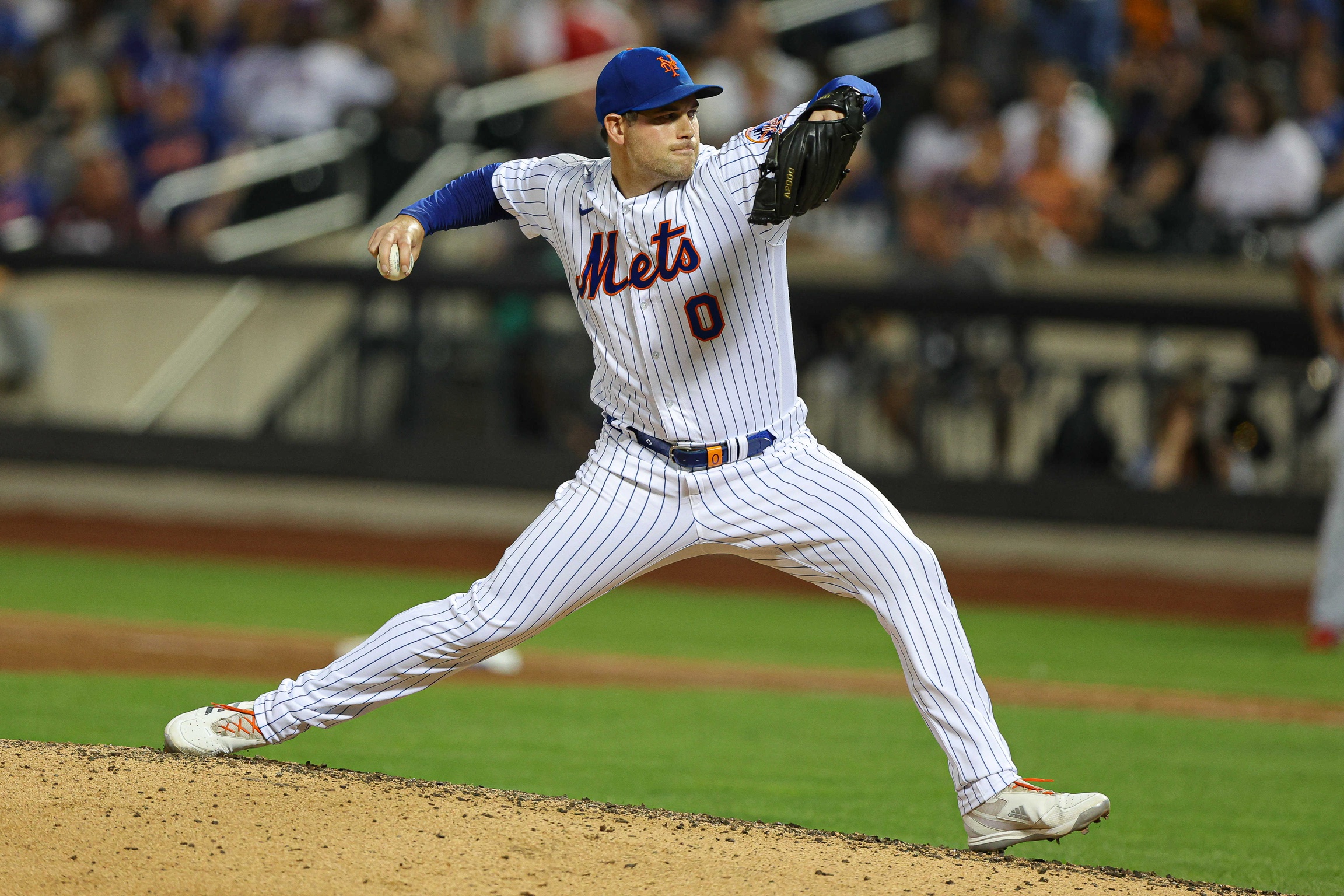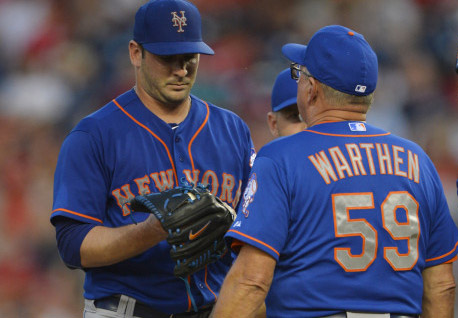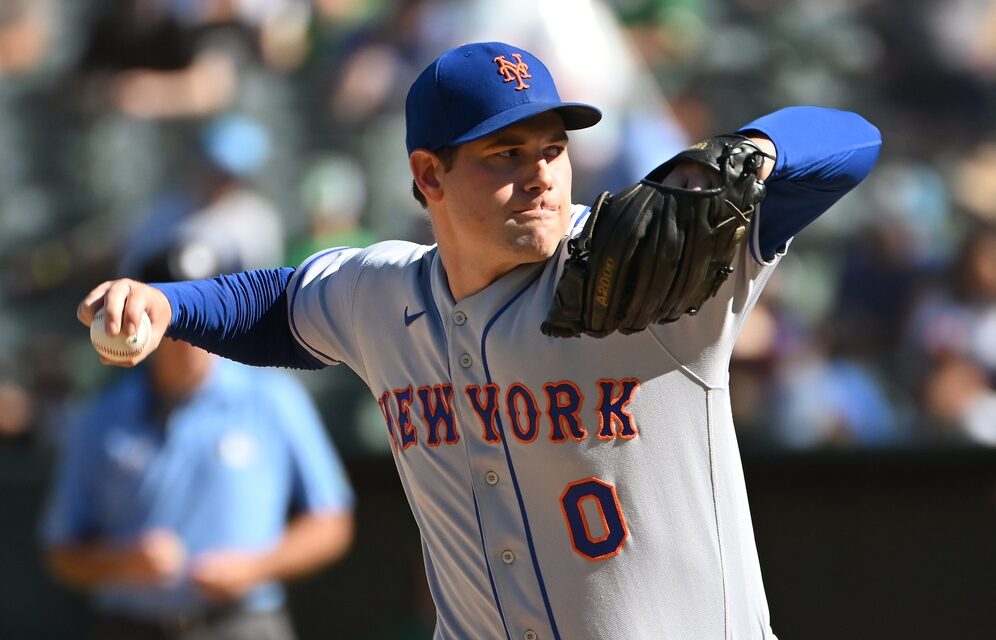
Vincent Carchietta-USA TODAY Sports
The Pitch Design Age has been a wonderful era to follow.
Over the last generation, the outlook on pitching shifted from a one-approach-works-best strategy to an individualized plan of attack, detailed to each pitcher. Even 10 years ago, this perception wasn’t realized among some major-league front offices. Pirates pitching coach Ray Searage‘s goal to teach Pittsburgh’s starters a strong sinker benefited and elongated the careers of several hurlers, but also stalled the development of Gerrit Cole, among others.
The Houston Astros, known for their progressive teaching methods, acquired Cole prior to the 2018 season and, as they say, the rest is history. Houston unlocked his high-velocity, high-spin-rate fastball, which he later parlayed into the richest contract for a pitcher in baseball history.
Cole’s development into an ace was only the beginning of the pitch design movement. Three years ago, the Mets gave up on a right-handed reliever, one who posted a 5.50 ERA over 147.1 frames with the club. Paul Sewald‘s since developed into one of the majors’ best relievers thanks to a dominant fastball-slider combination. Despite his fastball sitting in the 91-93 mph range, the offering’s impressive VAA (Vertical Angle Approach) allows it to disappear underneath a hitter’s angled swing.
Jake Mailhot of Fangraphs and Eli Ben-Porat have further broken down Sewald’s arsenal, with Ben-Porat noting his success can be explained by induced vertical break per second, which is excellent. Simply put, his velocity doesn’t lend much explanation for his success.
Advanced Metrics Lend More Depth To Pitching
By applying newer metrics such as Vertical Approach Angle, Seam-Shifted Wake, and Seam Orientation into their repertoire, pitchers are more optimized than ever.
Lindsey Alder’s March 2021 article at The Athletic described some of the methods the Yankees are utilizing to improve their pitchers’ sliders. Pitching labs have popped up across spring training complexes, where players can hone into the details and physics behind their pitches, receiving real-time feedback as they throw.
Even pitch classification systems have undergone a revolution. Slider Research (yes, that’s a thing) has exploded in recent years. Some sliders can be categorized as Sweepers, others are Whirlies, while scores fall in the category of The Warthen Slider. The application of Seam-Shifted Wake has led to a multitude of new pitch grips with the goal of throwing all sorts of sliders. And armed with that knowledge, pitching coaches are employing different techniques to test out sliders, as detailed by Eno Sarris at The Athletic.

Matt Harvey and former Mets pitching coach Dan Warthen
The Mets Have A Type
With a vast multitude of data now available, somewhat thanks to the development of the aforementioned pitching machines, Baseball Savant, MLB.com’s mecca for modern information, recently began reclassifying some sliders as sweepers. When Kodai Senga came stateside, his slider was just that: a slider. However, after only two Grapefruit League starts, Baseball Savant quickly differentiated between his sweeper and his slider.
Senga wasn’t the only marque Mets free-agent acquisition who had intriguing slider characters. As Jacob Resnick of SNY initially pointed out, the Mets targeted pitchers with above-average horizontal movement on their sliders over the offseason. Their 2022 bullpen had a major weakness; these signees address that concern.
In 2022, the Mets’ relievers struggled in a certain area of the strike zone. Thanks to Baseball Savant’s nifty Attack Zones tool, we can visualize exactly where the Mets’ bullpen struggled.

Last season, the team’s bullpen finished 27th in the majors in wOBA in The Heart Zone, which is what many know as middle-middle. It’s the middle of a batter’s strike zone. The Mets allowed a 0.367 weighted on-base average (wOBA). Complicating that issue was that six of the mainstays in the 2022 bullpen were destined for free agency.
A cabinet of new relievers was arguably the team’s greatest need. It’s evident that the Mets’ front office brass prioritized that by targeting pitchers with intriguing sliders.
Some of the relievers they acquired over the winter were old friends. Edwin Díaz will be sorely missed this year, but the team welcomed back Adam Ottavino. Brooks Raley and David Robertson are proven, trusted stalwarts at the backend. Other names are interesting, even if unproven. Jeff Brigham, Stephen Ridings, John Curtiss, Sam Coonrod, William Woods, Jimmy Yacabonis, and the list goes on. Even Elieser Hernández has some interesting slider qualities.
A factor that I misinterpreted here was the beauty in outliers
Elieser Hernandez is a great example of a pitch I probably would have cued an athlete away from before DL
2021 SL avg. movement metrics:
Velo:79.3
HB: -11.42
VB: 9.95
Release height: 5.48
Stuff+: 140🌟 pic.twitter.com/dWEAb52FpX— Matthew Kress (@m_kress__) February 1, 2022
At first glance, this looks like a “throw spaghetti at a wall and see what sticks” approach to bullpen making. Upon further research, it’s not that.
According to research by Ben Clemens of Fangraphs, sliders with above-average horizontal movement allow for more leeway in the middle of the plate–the exact place last year’s bullpen struggled.
From Clemens’ piece:
“If you have a slider with plus horizontal movement, it’s also okay to miss over the middle of the plate.”
To paraphrase his analysis, it’s incredibly difficult to quantify exactly what makes a slider effective, but one common hypothesis is that pitches with loads of movement perform better in the middle of the strike zone. Research by MLB’s Senior Data Architect, Tom Tango, supports this.
As the Mets work to fix their bullpen’s biggest problem from last season, they’ve invested in pitchers who throw sliders with extreme horizontal movement. These are sweepers.
How Are The Mets Using Sweepers?
A “sweeper” is a relatively new pitch classification in the majors, but it’s an important one. On the spectrum of sliders, where hard, diving cutters are on one end (think Edwin Díaz/The Warthen Slider), sweepers sit on the other plane of the spectrum. They tilt heavily to the pitcher’s glove side, gaining more horizontal movement than a traditional slider.
These sliders tilt more due to a phenomenon known as Seam-Shifted Wake (SSW), which is due to the way the seams of the baseball catch the air. Sweepers are best used when pitchers also have fastballs with low spin efficiencies. The Athletic wrote about the transformation of Rangers pitchers Jon Gray and Dane Dunning, detailing how they have altered their grip on their sliders to take more advantage of Seam-Shifted Wake (SSW). To visualize the effect that SSW can have on a pitch, check out Baseball Savant’s Spin Direction feature
With that said, several Mets hurlers now incorporate a sweeper in their arsenal.
Kodai Senga:
His ghost fork gets the attention (and it recently received Fangraphs analysis treatment) but don’t sleep on Senga’s sweeper. Due to some poor location at the top of the zone, the sweeper’s been hit hard early on, but it has the potential to develop into a solid change-of-pace offering. If properly located, the 42 inches of vertical drop should begin to induce whiffs.
Adam Ottavino:
Ottavino’s parlayed his offering into a career renaissance as told by the New York Times’ Matt Foley. His sweeper is a social media darling. Clips of it have gone viral on PitchingNinja’s Twitter account.
Adam Ottavino, Disappearing Slider. 👻 pic.twitter.com/8QmnWNNQVd
— Rob Friedman (@PitchingNinja) February 25, 2023
So far in 2023, his slider has produced a .228 xwOBA against, which is in line with his 2022 .209 xwOBA against. It drops 40 inches while moving horizontally five percent more than league-average comparables.
Jeff Brigham:
Jeff Brigham, a reliever acquired from the Miami Marlins this offseason, has even more movement on his sweeper. It moves right to left (from his point of view) 11% better than league-average comparisons. Last season, Brigham’s sweeper was his primary pitch, throwing it 58% of the time. It produced a .325 wOBA/.302 xwOBA, which led to a career-best 3.38 ERA.
Brooks Raley:
Raley, the lone southpaw in the Mets’ current iteration of their bullpen, is a frequent user of the sweeper. It’s been a key ingredient in his repertoire, as batters have yet to record a hit against it this season. Coming from a unique release point, the pitch elicited a 34.8% whiff rate last season.
Other noteworthy pitchers:
In a bid to make the Mets’ bullpen as their second lefty, T.J. McFarland debuted a sweeper this spring.
Veteran LHP T.J. McFarland has completely changed his slider as he tries to make the Mets' roster as an NRI.
• Career horizontal break: 5 inches
• Mets debut: 21-inch sweeperLast year's slider had a 16.7% whiff rate. Similar pitches to the new one (velo/mvmt) were above 30%. pic.twitter.com/OXEtsxXS9k
— Jacob Resnick (@Jacob_Resnick) February 28, 2023
Yacabonis was recently called up to serve as an extra reliever out of the pen. The stuff’s tantalizing, but his command issues have proved to be elusive to overcome.
Jimmy Yacabonis completely dismantling Eduardo Escobar with 3 pitches: a slider with 30" of horizontal then a pair of sinkers with 23" of horizontal the other way. Insane. pic.twitter.com/hMRnZdZnjE
— Codify (@CodifyBaseball) January 9, 2023
It’s evident the Mets have taken advantage of modern pitch design to target certain pitchers. It’s a smart move.
With a caveat that it’s still tremendously early in the season, the club’s pen has pitched to a solid 3.48 ERA, as of Saturday, April 15. In particular, several of the pitchers who throw sweepers have performed well. Ottavino’s allowed one run in six innings, Raley’s provided to be an effective fireman, and Yacabonis earned his call-up on the heels of 4.1 scoreless frames with Triple-A Syracuse.
Keep an eye on the sweeper, folks. It’s the pitch currently changing Major League Baseball.
Note: The code that drives this analysis, including an additional visualization of the movement behind some of the Mets’ sweepers, can be found on my Github.














